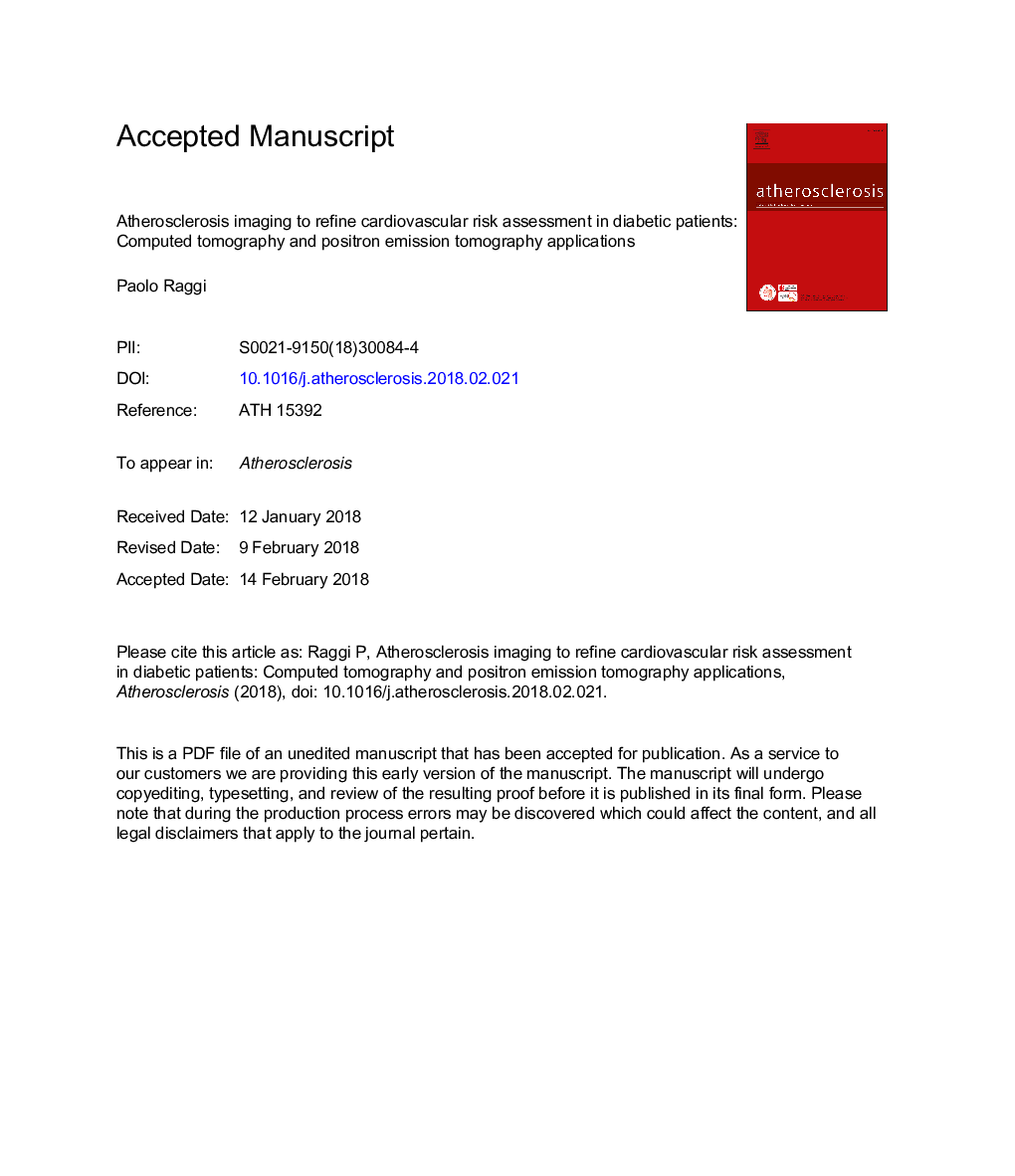| Article ID | Journal | Published Year | Pages | File Type |
|---|---|---|---|---|
| 8656910 | Atherosclerosis | 2018 | 28 Pages |
Abstract
The lifetime cardiovascular risk of a diabetic patient is approximately 4-5 times higher than that of an age and sex matched individual without diabetes mellitus. Despite the well-publicized cardiovascular risk equivalence of diabetes mellitus, it has become apparent that not all diabetic patients are equally at high-risk and many patients may have a level of risk similar to that of the general population. Cardiovascular imaging has been employed to address the dilemma of a more accurate risk stratification of diabetic patients. Two randomized clinical trials aiming at uncovering the presence of unknown obstructive coronary artery disease (CAD) gave disappointing results. In fact, the number of patients with inducible myocardial ischemia and/or severe obstructive disease was lower than expected and the overall outcome was not improved after having brought the existence of CAD to light. Other techniques that may help identify a diabetic patient susceptible to suffer future events have therefore being explored. In this review we discuss two imaging tools that provide anatomical and functional information on pre-clinical coronary atherosclerosis: computed tomography for calcium scoring, and plaque characterization and myocardial ischemia detection and positron emission tomography using tracers to identify functionally unstable plaques. Despite the availability of several imaging techniques there remain numerous questions as to the utility of imaging to define risk in diabetes mellitus and an optimal approach has yet to be found.
Keywords
Related Topics
Health Sciences
Medicine and Dentistry
Cardiology and Cardiovascular Medicine
Authors
Paolo Raggi,
